Shakuhachi Strategy– A Soundtrack for Your Binary Options Trading
Full Review of the Shakuhachi Strategy For Binary Options Trading
Remember the Getsuga Tensho strategy? It’s time for you to learn about one of its variations, The Shakuhachi. Yes, yes I know you’re thinking “Omg, why can’t this guy just name his strategies A, B or 1, 2 or anything but complicated Japanese words?” Well I could… but I don’t really want to, so bare with me, understand the strategy and then see if the name is something important or not.
Trading the Shakuhachi – Components
To trade this you will need to have a level of education and experience, you cannot just pick up the strategy and trade it if you are a newbie… or maybe you can if you are disciplined and follow it to the letter. I don’t know for sure, but let’s leave that discussion for later and let’s talk about the indicators we need: the first one is the XPMA (download below). If you’ve read my Getsuga Tensho article, I am sure you are familiar with this indicator. But no problem if you haven’t because it can be explained in a few words: it’s a custom moving average with a 75 period setting. It turns Red in a downtrend and Blue in an uptrend. Trades will be taken only in the direction indicated by XPMA 75 (only Calls if Blue and only Puts if Red). That’s that!
The second indicator we will be using is the Traders’ Dynamic Index (TDI) (find downloads below). I recently wrote an article explaining how I use this indicator and it’s mandatory that you read it. However, the settings of the indicator are substantially different that the default ones. Just to make sure we don’t get lost in
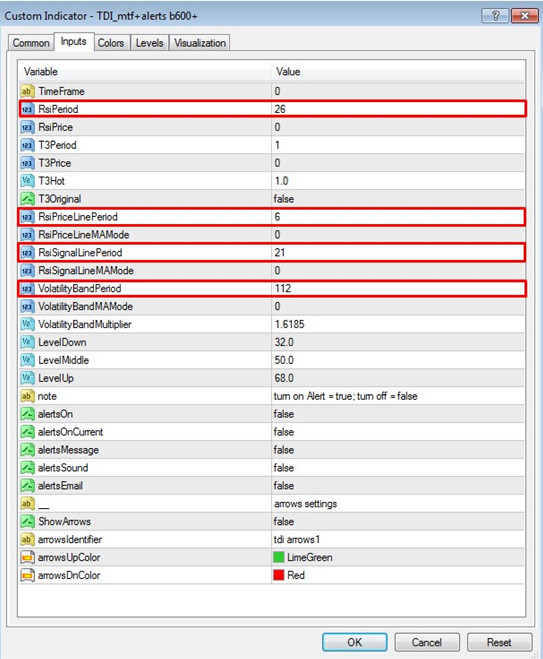
The settings inside the red rectangles are the ones I’ve changed so make sure you have them the same. Now there’s only one more indicator we need to discuss: a 30 minute Multiple Time Frame Stochastic with settings 5,3,3. This indicator is explained in a separate article and I strongly recommend you read it. Also, the indicator is available for download at the bottom of the linked article. Now let’s finally see how to trade the Shakuhachi.
Putting it All Together
The time frame I use for this strategy is 5 minutes. Do not ask me if it works on a different time frame because I don’t know. Ok, with that out of the way, let’s move on: for a Put we will need the XPMA to be Red, the Green line of the TDI to cross the Red one and the 30 minute Stochastic to be already crossed downwards. Got it? Here’s a pic (vertical line):
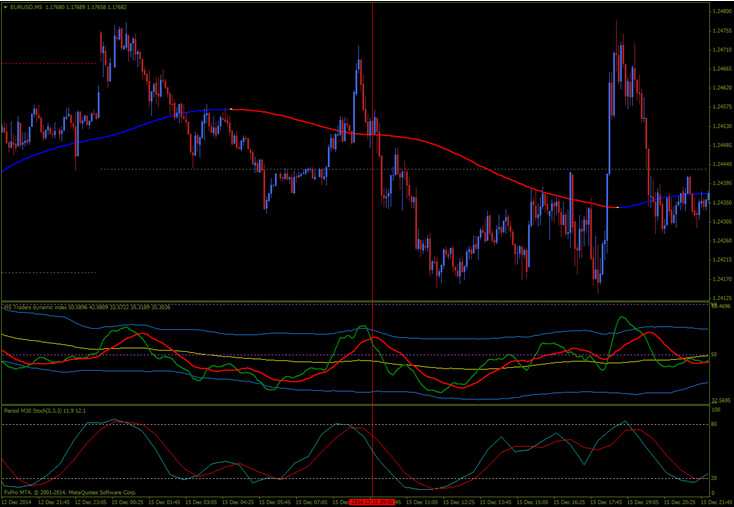
For a Call just reverse the rules: XPMA has to be Blue, the Green line of the TDI has to cross the Red one (upwards of course) and the 30 minute Stochastic to be already crossed upwards. Take a look:
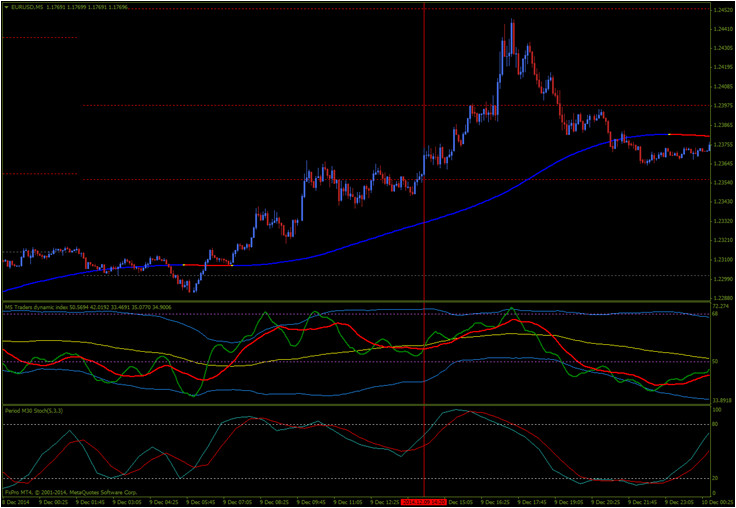
A Few Tips:
- The 30 minute stochastic does not need to be oversold or overbought but such a condition will increase the chances of success.
- If the Green line touches the Volatility Bands before the signal comes, the chances of success will also increase. I am talking about a touch of the Upper Band if we are waiting for a Put and a touch of the Lower Band if we are looking for Calls.
- The Yellow line of the TDI is very important. If it agrees with the direction of the trade, you have a high probability setup. By “agrees” I mean it is sloped upwards when taking a Call and downwards when taking a Put.
- If the Yellow line goes against your trade direction, I would pass on that trade even if everything else agrees.
- If the Yellow line is flat but everything else agrees, you have a setup with medium chances of success.
- Trade a cross that happens near the Yellow line
- Wait for the Stochastic to be crossed, DO NOT anticipate a cross, do not enter the trade thinking the Stochastic will agree later.
And because I know you are still confused (that’s normal, don’t worry), here are a few more pictures:
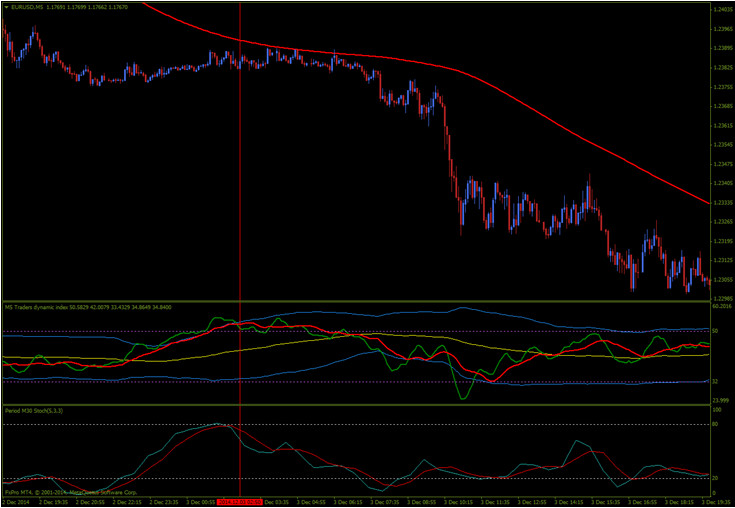
The Put above is a very risky trade because the Yellow line is against the direction of the trade. In the picture below we have 2 Calls:
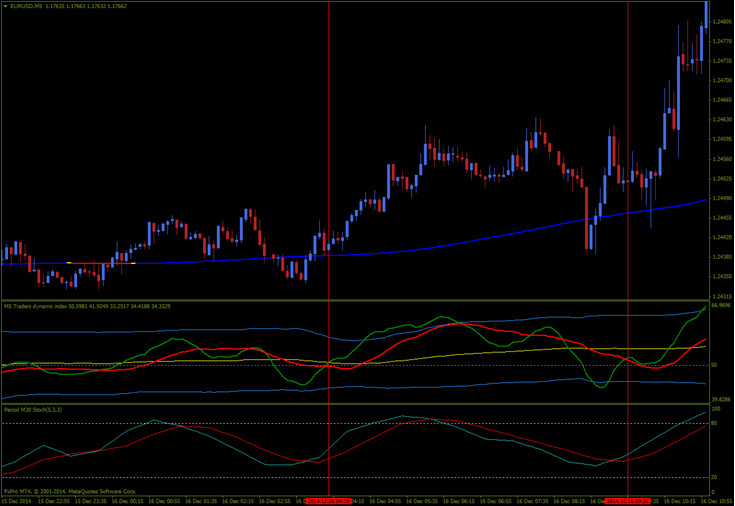
Why does Shakuhachi Suck?
To be honest it’s kind of hard for me to find reasons why it sucks. It’s not the Holy Grail, I’ll give you that, so you will lose some trades with it, no matter how good or experienced you are. Also, you must understand that it is not a strategy which gives you the direction of the next candle so you will need to adapt your expiry time to market conditions.
Why the Shakuhachi doesn’t Suck?
This is a personal opinion and it’s most likely subjective but I feel that once you understand the strategy – and I mean really understand it – you will be able to predict the market’s next short term move. Give it enough time and it will become less complicated.
Wrapping it up!
I am sure there will be enough questions and things that still need to be clarified. That’s why I will open a new thread on our Forum, dedicated to discussing this strategy. Ask and I will try to answer all of your questions. And just in case you’re wondering what Shakuhachi is: it’s the traditional Japanese bamboo flute… easy to blow in any flute, harder to make music.
Downloads Available:
- Traders Dynamic Index Indicator Download
- XXPA Indicator Download